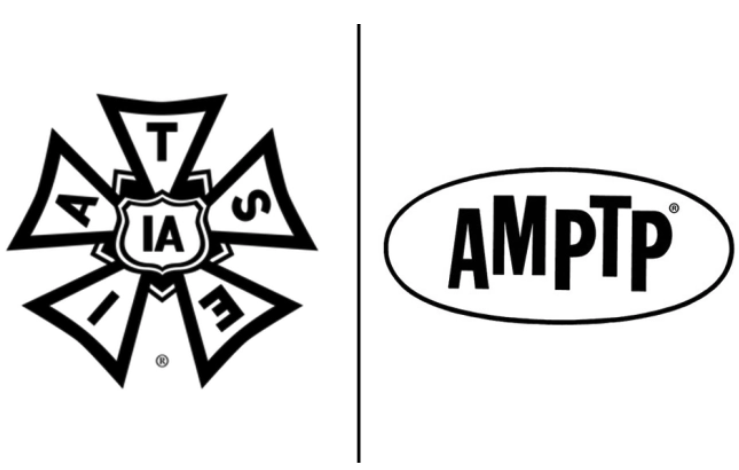Source: Deadline
The art of filmmaking is rarely, if ever, a one-person effort, and most productions require a substantial number of people in order to be completed. Of course, actors, directors, and producers are among the more noteworthy individuals to be associated with making cinema, but they are only a small handful of those whose efforts go into the process. From gaffers to set constructors, there can be hundreds of people collaborating on a single production at a time, and even if they don’t always get the recognition they deserve, their labor is essential to the making of a given film or television program. A shortage, if not complete absence, of such individuals would certainly bring major delays to the industry, and if recent events are any indication, the business of film could see such delays happening in the very near future.
The most recent event to suggest that a potential near-shutdown of the film industry is on the horizon came on Sunday, September 26th when the International Cinematographers Guild Local 600 voted to support a nationwide strike. This particular group is one of the largest to be part of the International Alliance of Theatrical Stage Employees (IATSE), a labor union that represents around 150,000 artisans, craftspersons, and technicians working in the entertainment industry throughout the United States and Canada. Its executive board voted unanimously on the matter, agreeing to encourage its members to vote “yes” on a potential strike, with national executive director Rebecca Rhine citing the need for working conditions to be as safe and healthy as possible for the thousands of people working in the industry. “Nobody wants to go on strike,” Rhine claims, “but we have been given little choice by companies that are earning record profits off our members’ labor, but are unwilling to treat those same workers with dignity and respect.”
The vote to endorse a strike follows the failed negotiations between the IATSE and the Alliance of Motion Picture and Television Producers (AMPTP), with the latter organization refusing to respond to proposals from the former that emphasized a variety of needs that its members have raised concerns over, including (but not limited to) “rest periods, breaks, a living wage, sustainable benefits and fair compensation for work in streaming which is now a well-established and profitable business.” In its announcement of its vote, Local 600 stressed its support of all other locals involved in the bargaining unit, with Editors Guild Local 700 also voting unanimously to support a nationwide strike. Local 600 and Local 700 serve as one of three union divisions to represent on a national level, the third being the Art Directors Guild Local 800 (which has not yet voted on whether or not to endorse a strike but is expected to do so some time within the week).
Whether or not there will be a strike will come down to two separate votes being held on October 1st and October 3rd, one held by the thirteen studio locals working on the West coast under the Hollywood Basic Agreement, the other being held by the twenty-three locals operating outside the Los Angeles area under the Area Standards Agreement. Approval of strike authorization is said to be encouraged by all leaders working for all thirty-six locals; if they are able to encourage enough of their members to vote “yes”, then there will most certainly be a strike taking place across the nation.
What would such a strike mean for the film industry? In California, it would mean an entire shutdown of every film and television production currently taking place, and in New York, it would mean that the grand majority of film and TV productions would shut down as well. This is what IATSE informed legislators of both states earlier last week, stressing that unless the AMPTP was willing to meet the demands being made, the economic impact on the film industry as a whole, which has already suffered major losses since last year as a result of the ongoing COVID-19 pandemic,could be catastrophic.
Speaking of the pandemic, one factor that could have a major impact on the upcoming strike votes is the expiration of return-to-work protocols established last year in order for the industry to resume work on many of its major productions. All of these protocols, consisting of testing, mask-wearing, and social distancing requirements, are set to expire on September 30th, one day before the vote for a strike is set to take place. While this agreement has been extended before and could very easily be extended again, doing so will require the full cooperation of the AMPTP and all unions involved, including the IATSE. Should there be a strike, it’s unlikely that these protocols will be extended, which could potentially put those who would still be working at risk of COVID infection.
Striking and the resulting shutdown of most film and television production is nothing new to the film industry. Many recall the 2007 strike held by the Writers Guild of America and how it forced delays on many of the biggest films and television series being made at the time. However, the WGA isn’t nearly as big or inclusive as the IATSE; should a strike be approved, then a significant percentage of the nearly 150,000 union members will take to the streets demanding better treatment from employers. The longer it takes for a satisfactory agreement between both the IATSE and the AMPTP to be reached, the longer it will take for the industry as a whole to get back up and running, so hopefully, if there is a vote in support of strike authorization, the event will conclude as quickly as possible.
In the meantime though, the nation will have to prepare for an upcoming strike, as IATSE president Matthew Loeb is adamant about one taking place. “We are at a stage where the employers have made this struggle about power, not reason,” Loeb states. “Therefore we are initiating a strike vote to authorize me to call one if necessary.”




